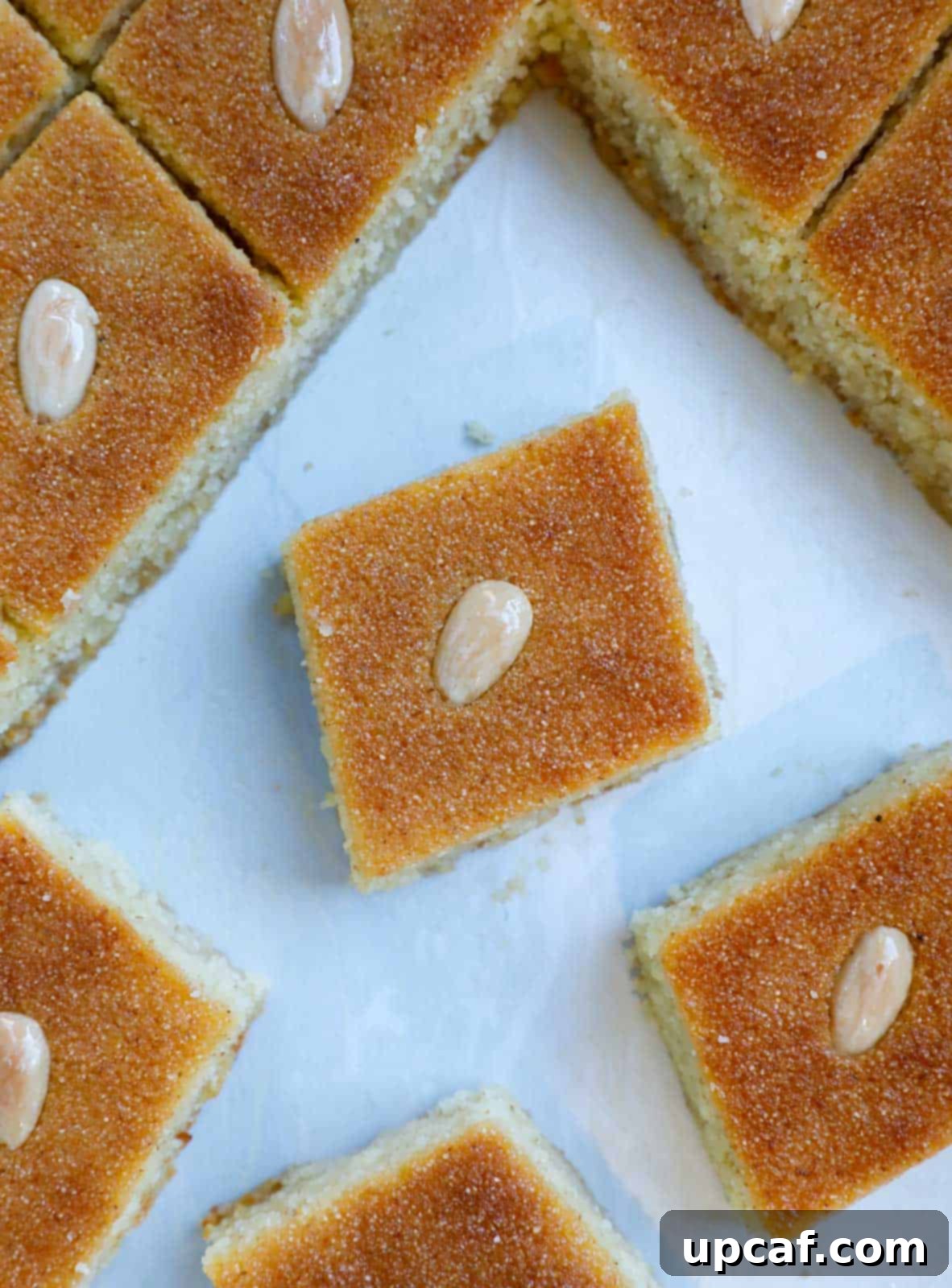Namoura (نمورة) is an exquisite Lebanese semolina cake, celebrated throughout the Middle East for its perfect harmony of sweetness, rich texture, and aromatic fragrance. This delightful dessert is remarkably simple to prepare, making it a beloved staple for family gatherings, festive celebrations, or a comforting afternoon treat paired perfectly with a warm cup of tea or Arabic coffee. Its irresistible charm lies in its moist, tender crumb, generously soaked in a delicate sugar syrup, and often adorned with crunchy almonds.
If you have a fondness for traditional Lebanese desserts, you might also enjoy exploring my Coconut Basbousa Recipe and my Lebanese Sfouf Recipe. These cherished family favorites offer a taste of authentic Middle Eastern sweetness, each with its unique character and appeal.
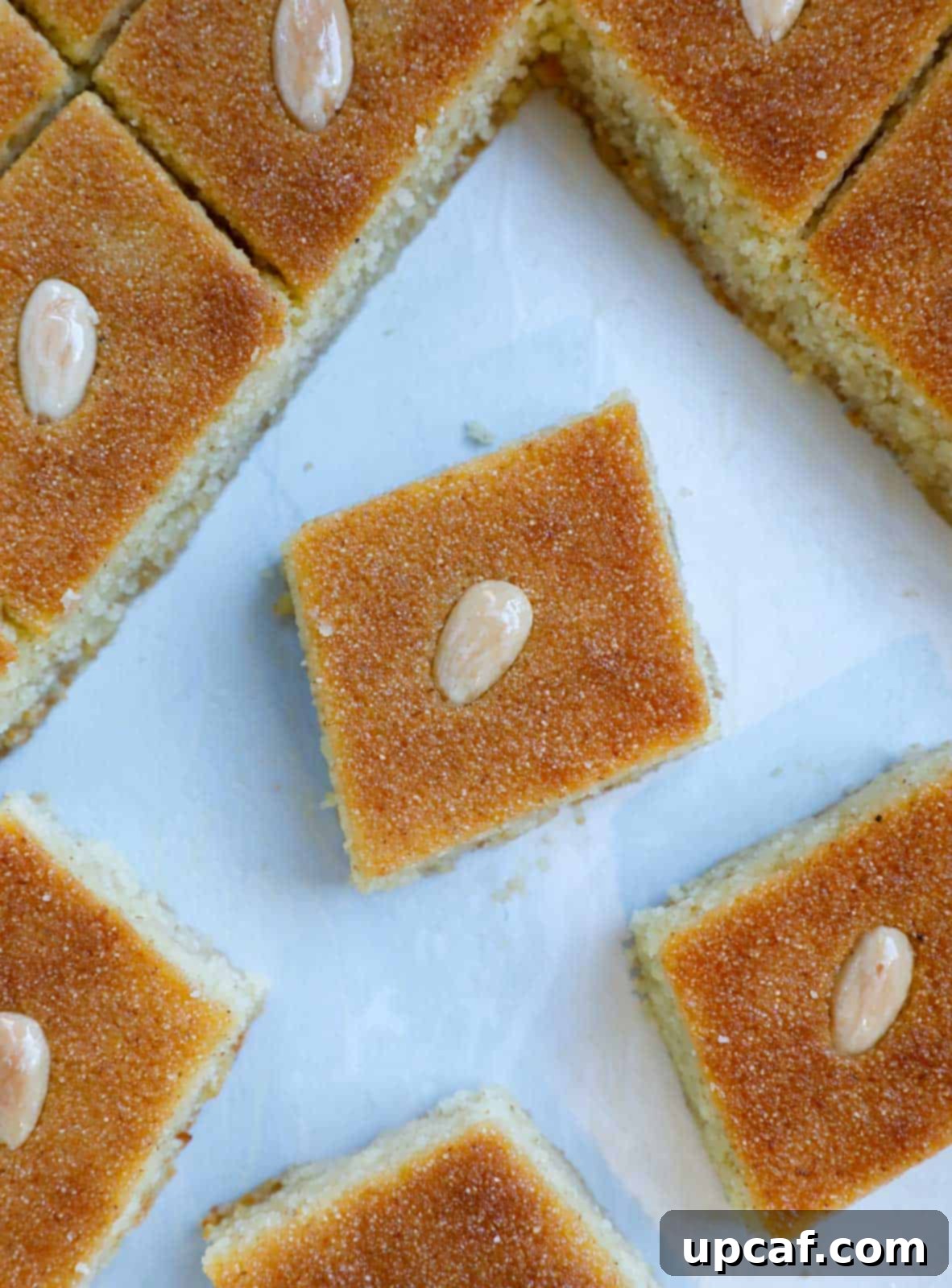
What is Namoura (نمورة)? A Beloved Middle Eastern Semolina Cake
Namoura, a culinary gem from Lebanon, is a traditional semolina-based cake renowned for its incredibly moist texture and fragrant essence. After baking to a beautiful golden perfection, it’s generously drenched in a sweet, aromatic sugar syrup, often infused with rose or orange blossom water. While it’s known as Namoura in Lebanon, this delightful dessert has many beloved variations and names across the Middle East and beyond, each reflecting the unique culinary heritage of its region.
In Egypt, a similar confection is lovingly called Basbousa, frequently featuring coconut as a key ingredient, which lends a distinct flavor and texture. Palestinians refer to their version as Harissa, which can sometimes be a bit denser or incorporate different spices. Armenians enjoy their rendition, known as Shamali, while Persians delight in Revani or Ravani, which often includes a hint of lemon zest or different nut toppings. Although the core concept of a semolina cake steeped in syrup remains, these cultural interpretations often vary slightly in ingredient ratios, baking techniques, or aromatic additions, resulting in a spectrum of delectable experiences. What unites them all, however, is the heartwarming comfort they bring to every table.
Why You’ll Fall in Love with This Namoura Recipe
This traditional Lebanese Namoura recipe is more than just a dessert; it’s an experience that captivates with its simplicity and profound flavor. Here’s why this recipe is destined to become a cherished addition to your culinary repertoire:
- Effortless Preparation: Forget complicated baking techniques. With a list of basic pantry staples and clear, straightforward instructions, even those new to baking can confidently create this impressive dessert. Its simplicity truly belies its sophisticated taste. You won’t need any fancy equipment, just a mixing bowl, a spatula, and a baking pan.
- Unforgettable Texture Sensation: The magic of Namoura lies in its unique texture. The blend of coarse and fine semolina, combined with the rich moisture from yogurt and evaporated milk, yields a cake that is wonderfully tender and crumbly, yet holds its shape perfectly. Each bite offers a delightful melt-in-your-mouth experience, further enhanced by the subtle crunch of almonds and the succulent absorbency of the fragrant syrup.
- Remarkably Versatile: While traditional Namoura stands strong on its own, this recipe is incredibly adaptable to your preferences. You can easily customize it by experimenting with different nuts like pistachios or walnuts, adding a sprinkle of shredded coconut to the batter for a Basbousa-like twist, or even infusing the syrup with additional spices such as cardamom or a touch of vanilla extract for a personalized flavor profile.
Essential Ingredients for Authentic Lebanese Namoura
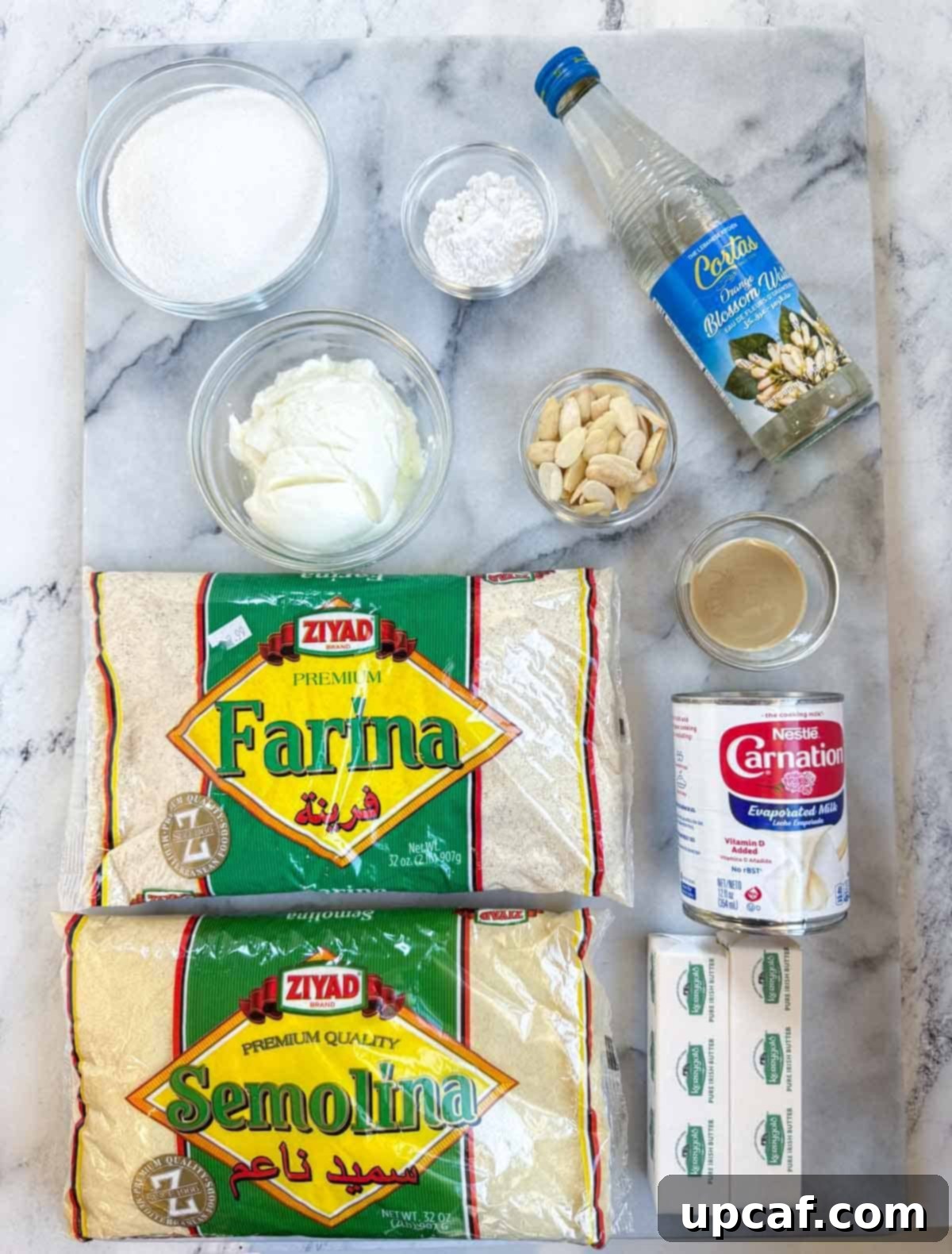
Crafting the perfect Namoura requires a careful selection of readily available ingredients, predominantly pantry staples. The full, precise measurements can be found in the comprehensive recipe card below.
For the Namoura Cake Base
- Coarse and Fine Semolina: The heart and soul of Namoura, durum wheat semolina is crucial. The combination of coarse and fine grains provides the signature crumbly, yet tender texture that distinguishes this cake. Coarse semolina adds structure and a delightful chew, while fine semolina contributes to the cake’s overall softness and helps it absorb the syrup beautifully.
- Granulated Sugar: This sweetens the cake batter directly, ensuring a balanced flavor even before the syrup is added.
- Plain Yogurt: A vital ingredient that imparts incredible moisture and a slight tang, counteracting the richness and resulting in a cake that is exceptionally tender and never dry. Full-fat yogurt is recommended for the best results.
- Evaporated Milk (Carnation Milk): Adds a wonderful depth of flavor and significant moisture to the batter, contributing to the cake’s tender crumb. While evaporated milk is preferred for its richness, you can substitute it with an equal amount of full-fat milk if necessary, though the flavor profile may be slightly altered. Ensure it is warm before mixing.
- Unsalted Butter (warm, melted): Incorporates a rich, buttery flavor and helps bind the semolina. Using warm, melted butter (or ghee for an even nuttier aroma) ensures even distribution and proper hydration of the semolina grains, leading to a superior texture.
- Baking Powder: Acts as a leavening agent, giving the cake a slight, desirable rise without making it overly airy, maintaining its characteristic density.
- Almond Halves: Primarily used for garnishing, these add an elegant visual appeal and a delightful, subtle crunch to each piece. Ensure you use peeled almonds for a smooth finish and a more refined taste.
- Orange Blossom Water (for the batter): A fragrant floral essence that infuses the cake batter with a delicate, signature Middle Eastern aroma, complementing the rich semolina.
For the Aromatic Sugar Syrup (Ater)
- Granulated Sugar: The base for our sweet, thick syrup, providing the essential sweetness that saturates the cake.
- Water: Dissolves the sugar to form the liquid base of the syrup. The ratio of sugar to water is key for achieving the correct consistency.
- Fresh Lemon Juice: A small amount of lemon juice is crucial not just for a subtle tang that balances the sweetness, but also to prevent the sugar from crystallizing during cooking and cooling, ensuring a smooth, clear syrup.
- Rose Water and Orange Blossom Water: These highly aromatic floral essences are the hallmark of Middle Eastern desserts. They infuse the simple syrup with an incredibly fragrant and captivating aroma, elevating the Namoura from a simple cake to a truly exotic treat.
Understanding Semolina: Coarse vs. Fine for Perfect Namoura
The type of semolina you use is fundamental to achieving the authentic texture of Namoura. This recipe calls for a specific blend of both coarse and fine semolina, each contributing distinct characteristics to the final cake.
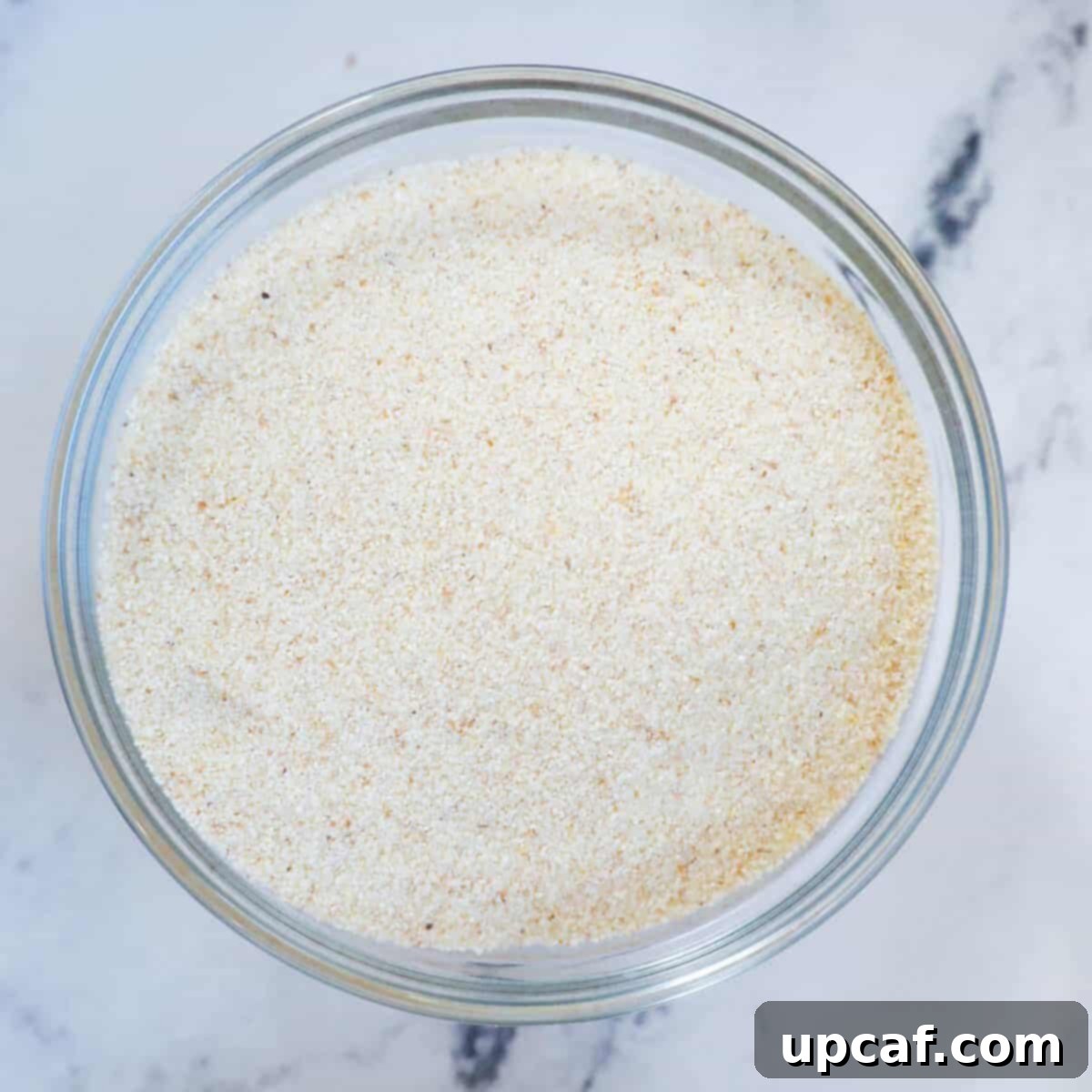
Texture: Characterized by its gritty, granular feel and larger particle size, coarse semolina provides structure and a pleasant chewiness to the cake, preventing it from becoming overly dense or paste-like.
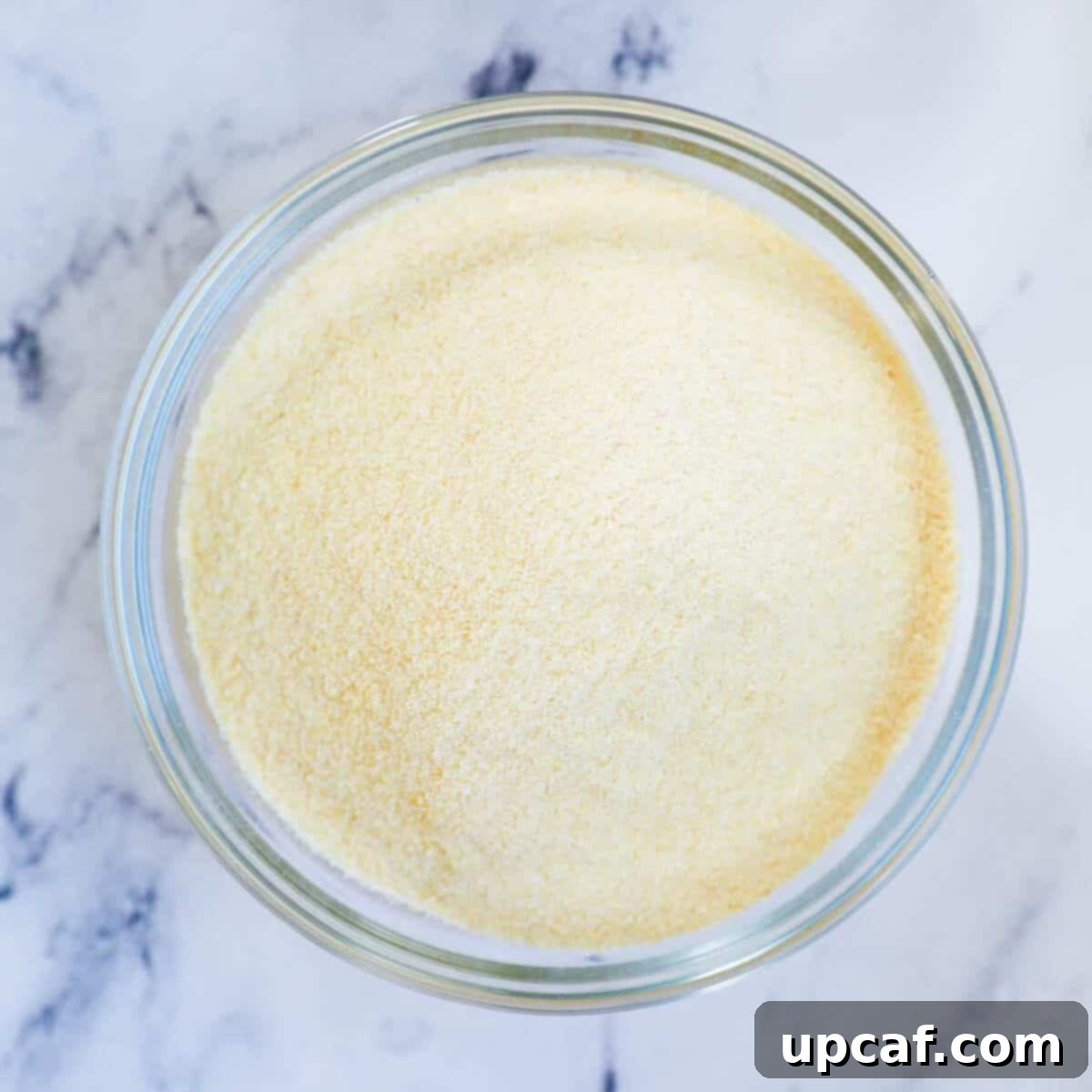
Texture: Much smoother and more powdery than its coarse counterpart, fine semolina helps to create a tender crumb and allows for better absorption of liquids, including the syrup. This ensures the Namoura is moist and delicate.
The thoughtful combination of both coarse and fine semolina is a hallmark of authentic Namoura. While coarse semolina imparts a desirable chew and structure, fine semolina contributes to the cake’s tenderness and ensures it fully absorbs the fragrant sugar syrup, yielding a perfectly balanced and moist dessert. Substituting with only one type of semolina or using a different flour will significantly alter the final texture and taste, so it’s crucial to adhere to the recommended blend for the best results.
Step-by-Step Guide: How to Make Irresistible Namoura (نمورة)
Creating the exquisite Namoura (نمورة) cake from scratch is a surprisingly simple and rewarding process. Follow this detailed step-by-step guide to master this delicious Lebanese dessert in your own kitchen.
Step 1: Prepare the Aromatic Sugar Syrup (Ater)
The first crucial step is to prepare the sugar syrup, also known as Ater in Lebanese cuisine. For a comprehensive guide on making this essential component, refer to my detailed recipe: How to Make Lebanese Simple Syrup (Ater). It’s important that the syrup is made in advance and allowed to cool completely, as it will be poured over the hot cake immediately after baking.
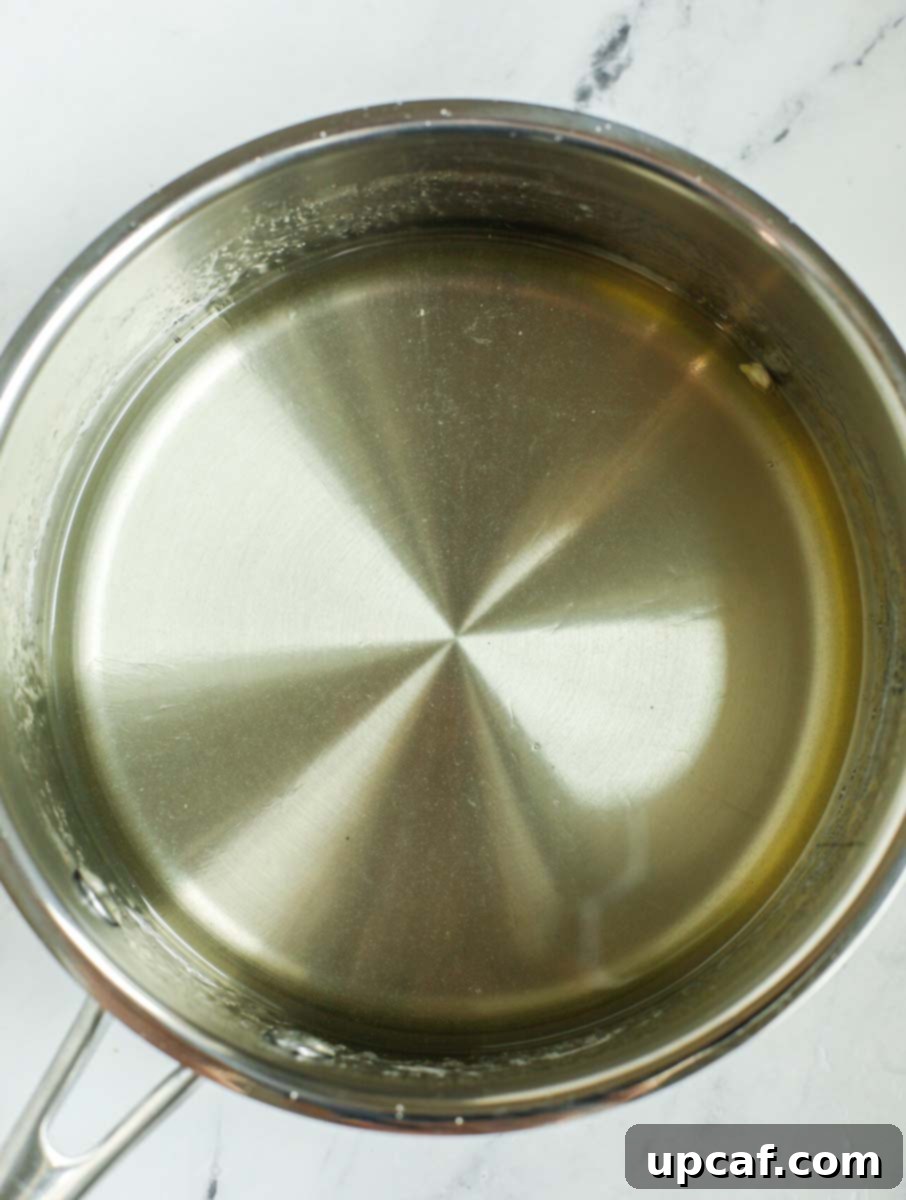
Step 2: Crafting the Namoura Batter
The batter for Namoura is straightforward, requiring minimal mixing. The key is to ensure all ingredients are well combined and the semolina is properly hydrated.
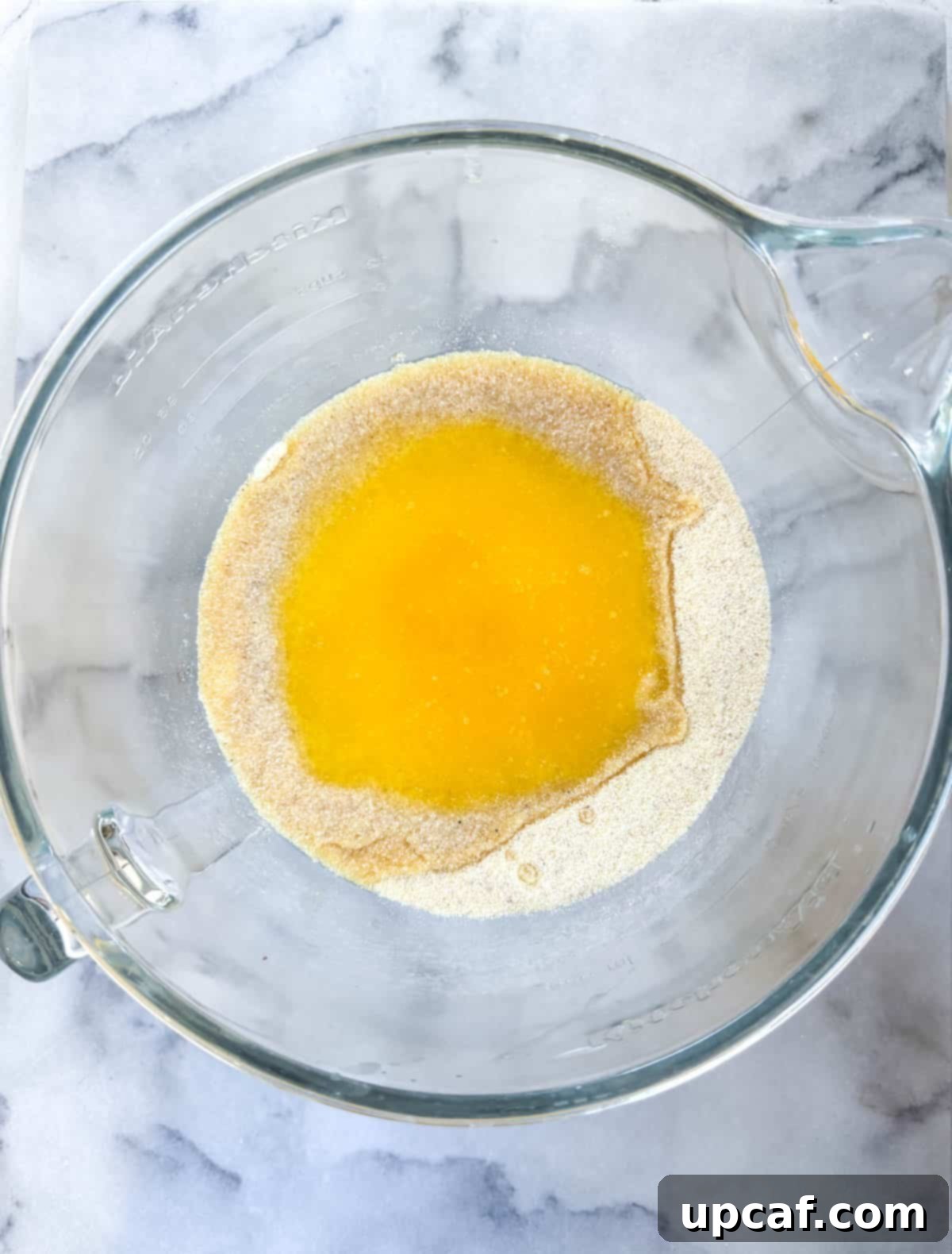


Step 3: Prepare the Pan, Shape the Batter, and Garnish with Almonds
This stage involves preparing the baking pan and meticulously shaping the Namoura before its initial bake.
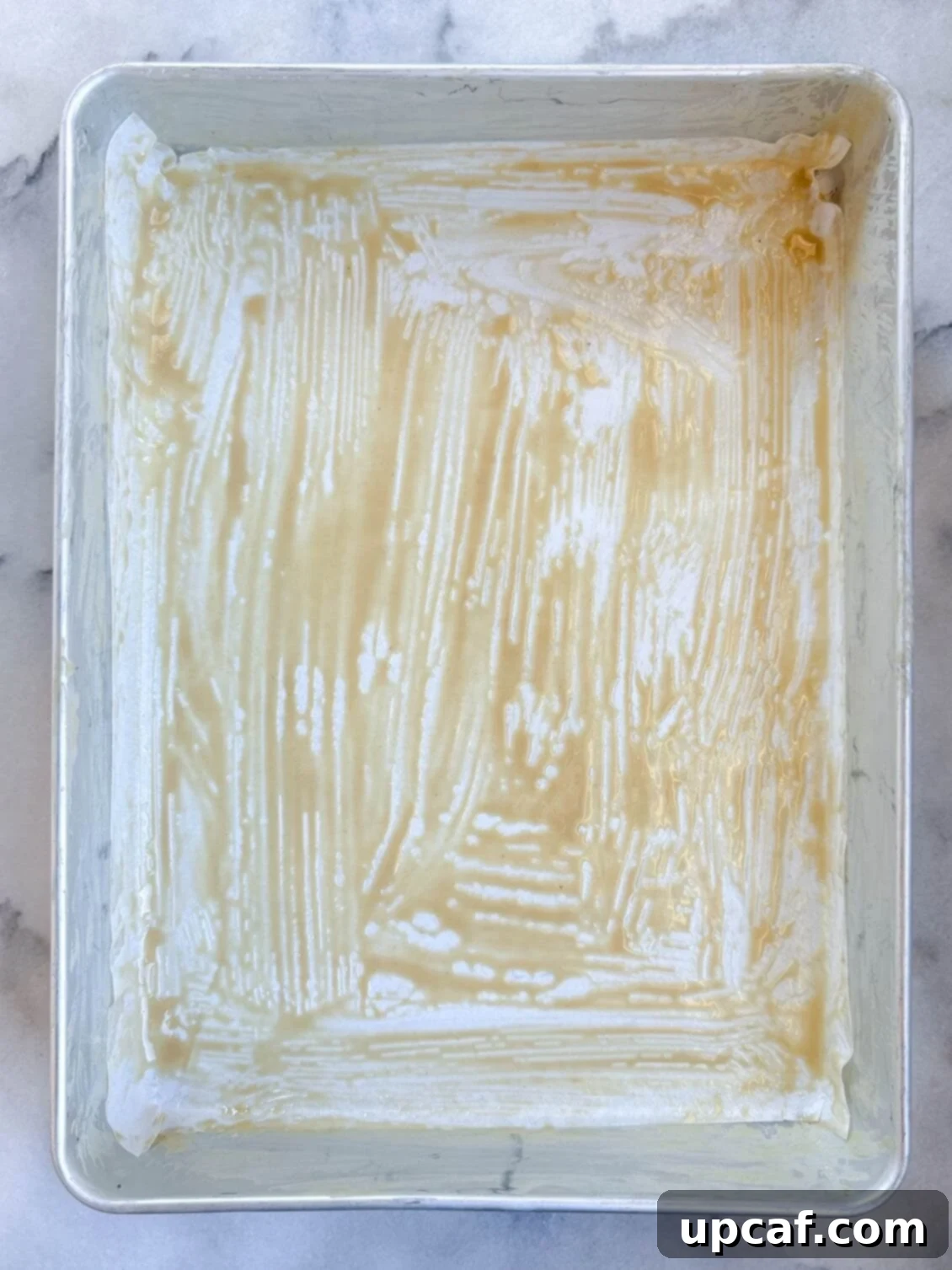
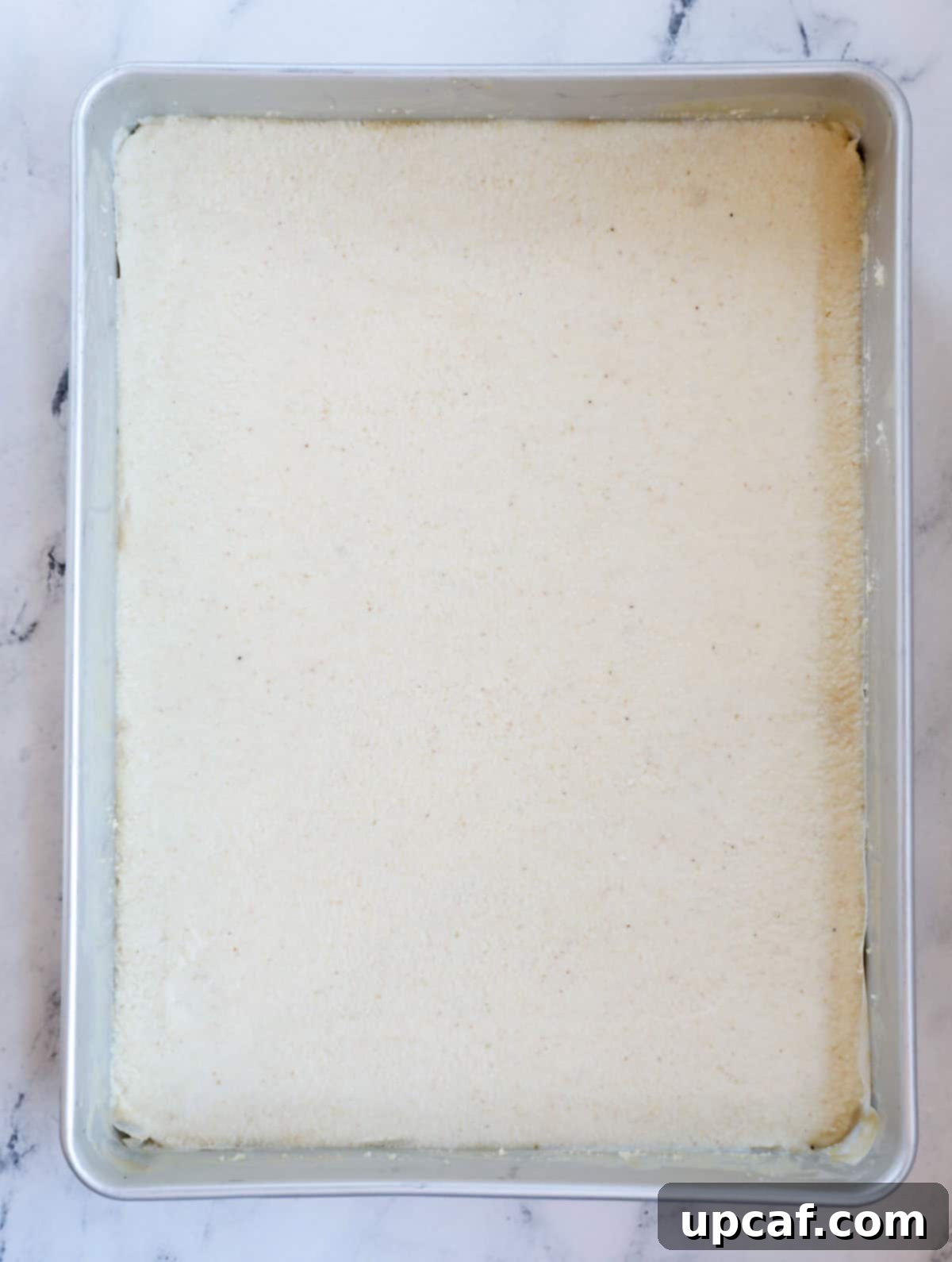

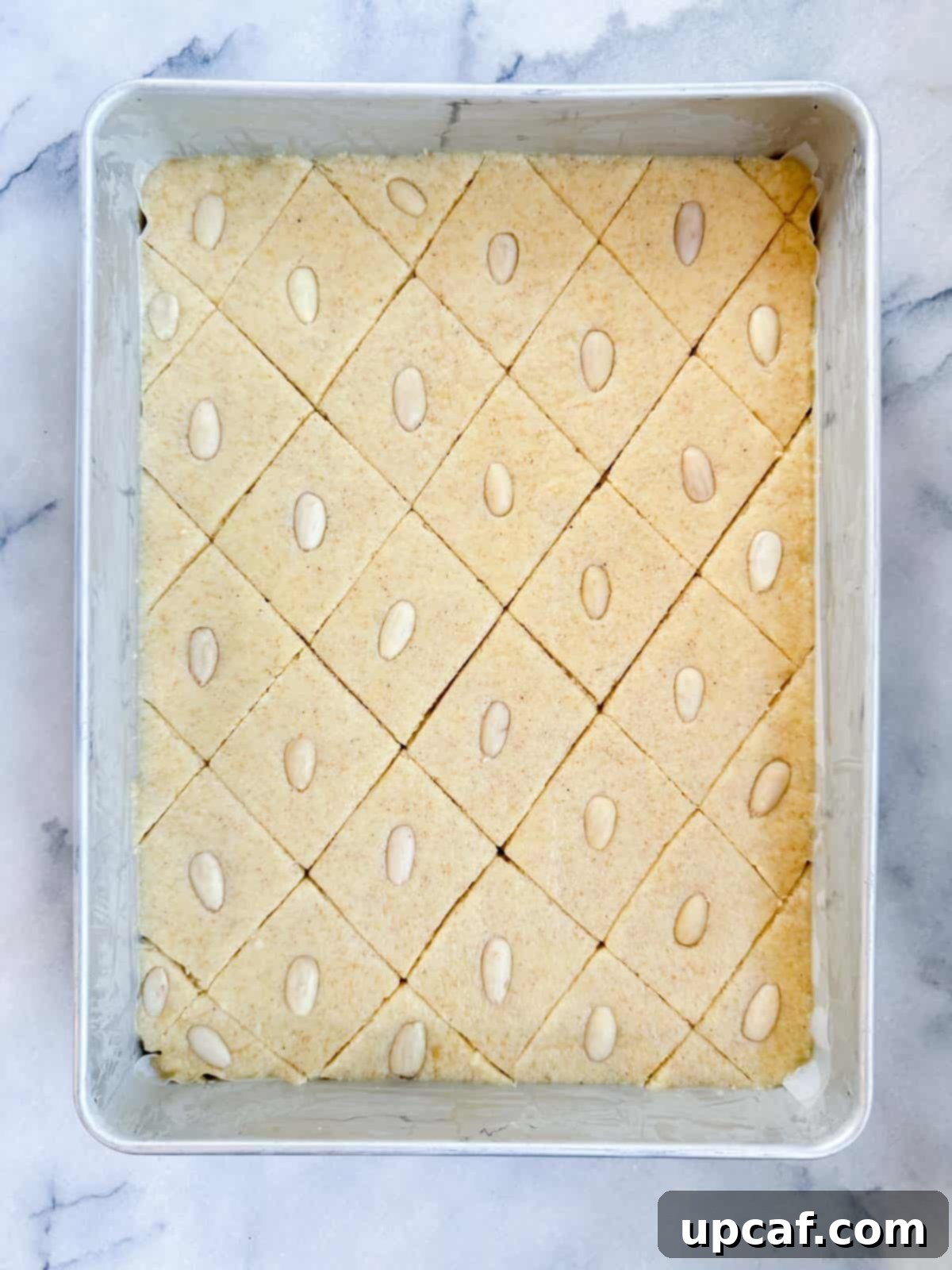
Step 4: Bake the Namoura Cake and Drench with Fragrant Syrup
The baking process for Namoura involves two stages, followed by the essential syrup drenching.
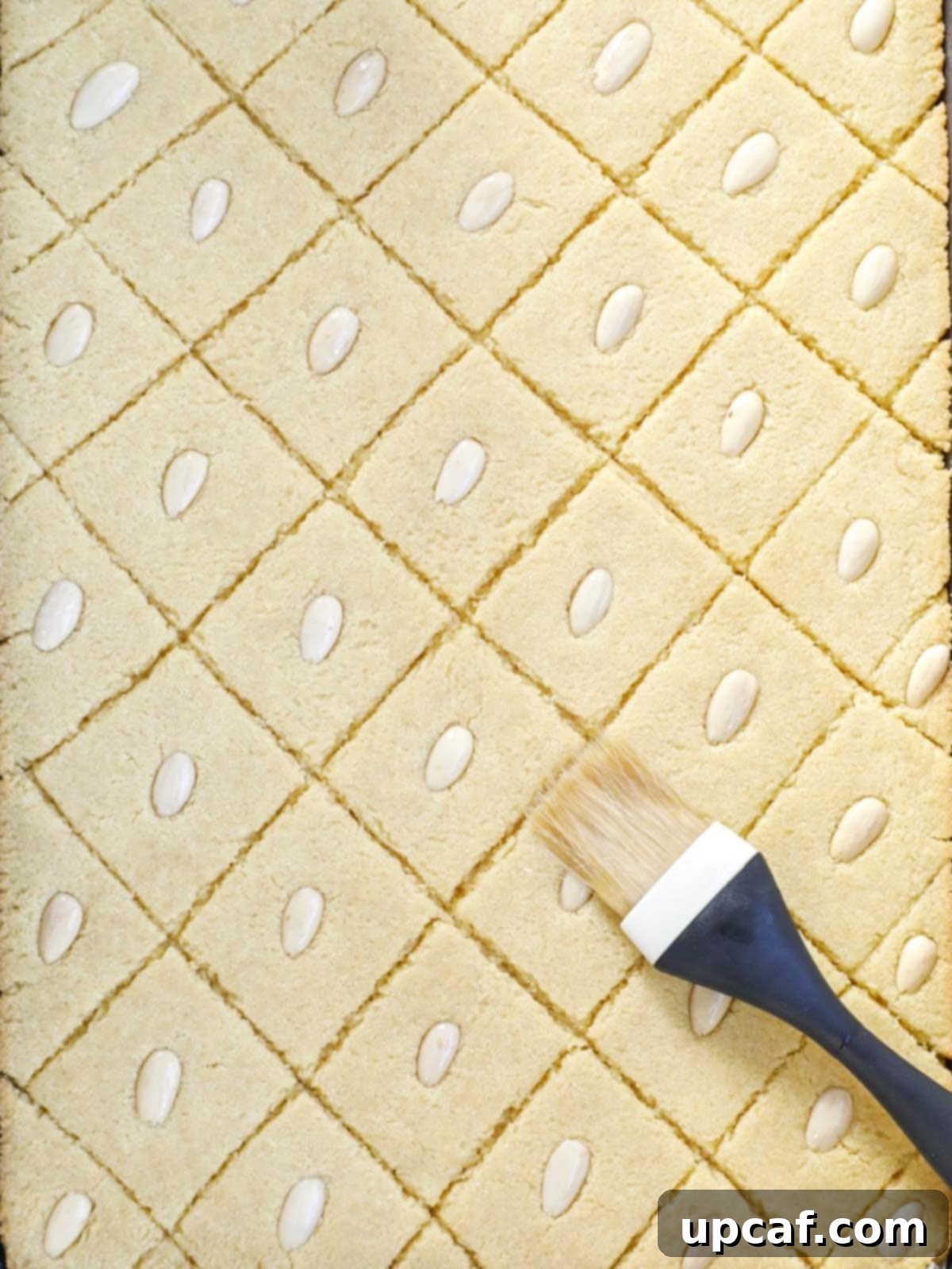

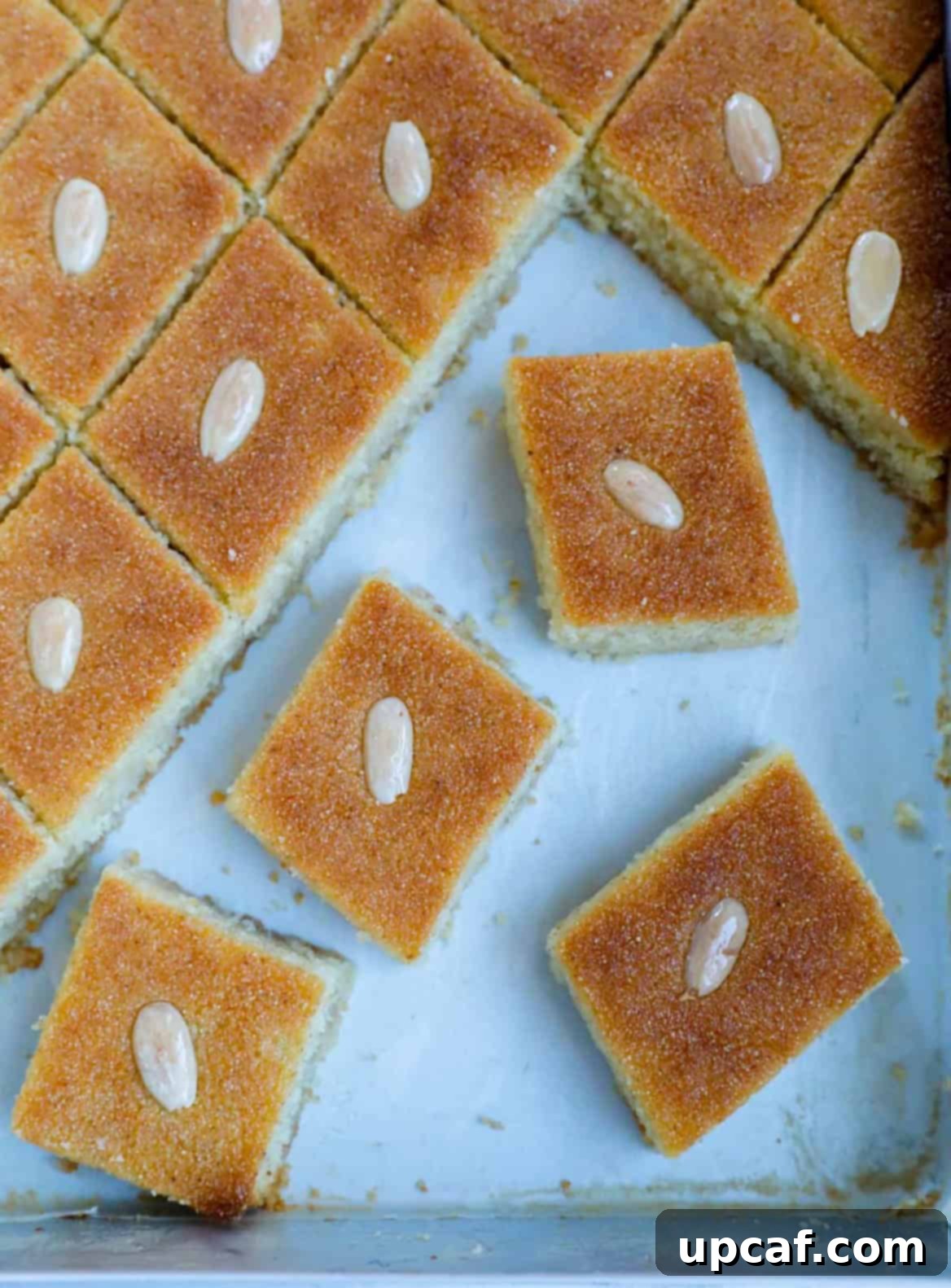
Storing and Freezing Your Namoura
Proper storage is key to maintaining the deliciousness and moisture of your homemade Namoura.
Storing Namoura: For optimal freshness and flavor, Namoura should be stored in an airtight container at room temperature. Under these conditions, it will remain wonderfully moist and delicious for up to 3 days. If you wish to extend its shelf life further, you can refrigerate it for up to 7 days. Beyond this period, the cake may begin to dry out, especially if it wasn’t thoroughly drenched in syrup.
Freezing Namoura: While it is generally not recommended to freeze Namoura cake, as its delicate texture can slightly change, it is possible if absolutely necessary. To freeze, wrap individual pieces or the entire cake tightly in plastic wrap, followed by a layer of aluminum foil, and place it in a freezer-safe container. It can be frozen for up to 1 month. When ready to enjoy, thaw the Namoura at room temperature. You might find that the texture is slightly softer, and it may no longer possess its original crispness. If it appears a little dry, a light drizzle of extra warm sugar syrup before serving can help revive its moisture.
Crucial Tips for Namoura Perfection
- Allow for Ample Resting Time for the Batter: This is arguably the most critical step. Ensure the completed Namoura batter rests for at least 2 hours (and ideally even longer, up to 4 hours) before you cut it into shapes and bake it. This extended resting period allows the coarse semolina grains to fully hydrate and soften, which is essential for achieving that distinct, melt-in-your-mouth texture that is the hallmark of a perfect Namoura. Skipping this step will result in a dry, gritty cake.
- Exercise Extreme Caution While Broiling: When it’s time to brown the top of the cake, keep a very close watch on it during the 1-2 minutes of broiling. Broilers can quickly burn delicate desserts, so stay vigilant and remove the cake as soon as it achieves a beautiful golden hue.
- Do Not Skimp on the Sugar Syrup: For a truly moist and succulent Namoura, it is imperative to pour all 3-4 cups of the prepared sugar syrup over the hot cake immediately after baking. If you use less syrup, the semolina will not absorb enough moisture, resulting in a dry, crumbly cake, far from the traditional tender texture. The semolina is designed to absorb a significant amount of syrup, so trust the process. Aim for at least 3 cups for a moderately moist cake, but 4 cups is ideal for ultimate richness.
- Post-Syrup Resting is Essential: After drenching the cake with syrup, allow it to rest undisturbed at room temperature for at least 1-2 hours (or even longer, up to 4 hours) before cutting and serving. This resting time gives the cake ample opportunity to fully absorb all the fragrant syrup, ensuring every bite is moist and flavorful, and making it much easier to slice neatly.
- Ensure Warm Wet Ingredients: Both the milk and butter used in the batter must be warm, not cold, when incorporated. Warm liquids help to soften the semolina more effectively and integrate better with the other ingredients, contributing to a smoother batter and a more tender final product.
- Consider Your Pan Size Carefully: The dimensions of your baking pan significantly impact the thickness and baking time of your Namoura. This recipe is optimized for a 15 x 10 inch pan, yielding a cake approximately 0.75 inches thick, which is my preferred medium thickness. If you opt for a smaller pan, your cake will be thicker and may require a longer baking time. Conversely, a larger pan will produce a thinner cake that bakes more quickly. Adjust baking times accordingly to prevent over-baking or under-baking.
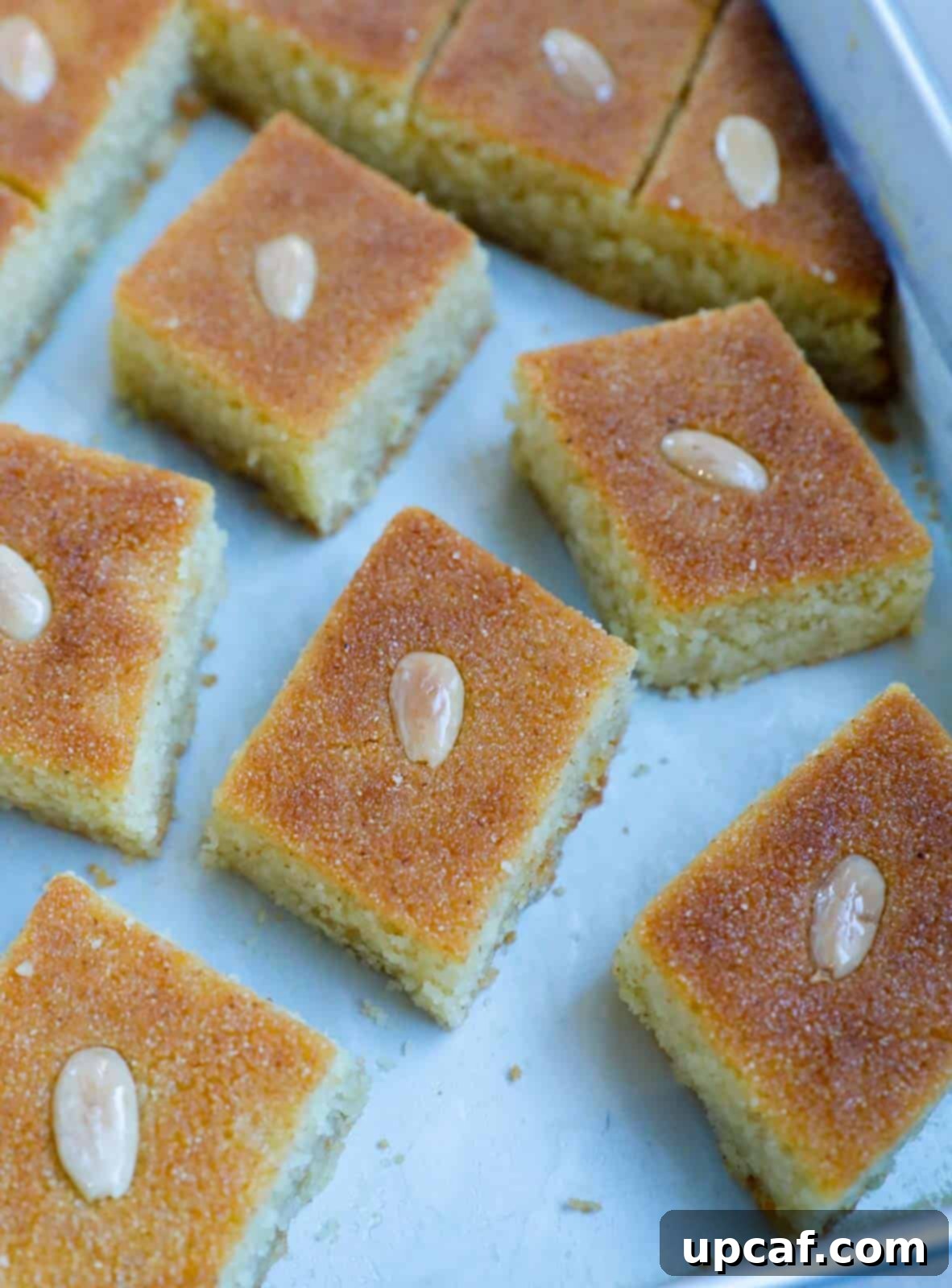
Frequently Asked Questions About Namoura
Yogurt is a fundamental ingredient for traditional Namoura, playing a crucial role in achieving its characteristic moist and tender texture. It adds both acidity and fat, which help break down the semolina and keep the cake incredibly soft. Omitting it would drastically change the texture and likely result in a much drier, denser cake. Therefore, it is strongly recommended to use yogurt for an authentic Namoura.
When stored properly in an airtight container at room temperature, Namoura can maintain its deliciousness for up to 3 to 4 days. If you prefer to extend its freshness, it can be refrigerated in an airtight container for up to 7 days. Beyond this period, the cake may begin to lose its optimal moisture and texture, becoming noticeably drier.
Evaporated milk is preferred for its rich, creamy texture and concentrated flavor, which contributes significantly to the Namoura’s moistness. However, if you don’t have it on hand, you can replace it with an equal amount of full-fat regular milk. Alternatively, you could use a combination of milk and a little extra yogurt to achieve a similar rich consistency.
While it might be tempting to skip it, orange blossom water is a signature flavor in many Middle Eastern desserts, including Namoura. It infuses both the cake and the syrup with its unique, delicate floral aroma, which is essential for the authentic taste profile. Omitting it would result in a less traditional and flavorful dessert. It is highly recommended to include it for the true Namoura experience.
No, the recipe specifically calls for Durum Wheat Semolina. Corn meal or corn semolina have a different texture and absorption rate compared to durum wheat semolina. Using them as a substitute would fundamentally alter the structure, moisture, and traditional taste of Namoura, resulting in a cake that is significantly different from the authentic version.
A dry and crumbly Namoura is usually due to two main reasons: insufficient sugar syrup or not allowing the batter enough resting time. Ensure you pour the full recommended amount of syrup over the hot cake, as the semolina needs to absorb it all for moisture. Additionally, the initial 2-hour resting period for the batter is crucial for the semolina to properly hydrate. If the semolina isn’t fully hydrated before baking, the cake will turn out dry.
Absolutely! While peeled almonds are traditional, you can certainly experiment with other nuts for your Namoura topping. Pistachios, walnuts, or even pine nuts can offer delightful variations in flavor and texture. Just ensure they are gently pressed into the scored batter before baking.

More Middle Eastern Desserts You Should Also Try
- Fried Atayef with Ashta: Delightful sweet dumplings filled with cream.
- Authentic Pistachio Baklava: Layers of crispy phyllo and rich pistachio, soaked in syrup.
- Lebanese Nights Pudding (Layali Lubnan): A creamy, fragrant semolina pudding with an exquisite topping.
- Homemade Walnut Baklava: The classic baklava, featuring a generous walnut filling.
Lebanese Namoura (نمورة) is far more than just a dessert—it embodies a vibrant celebration of Middle Eastern flavors and culinary traditions. With its perfectly balanced moist, tender, and subtly crunchy texture, generously infused with fragrant syrup, traditional Namoura stands as a beloved staple in countless homes. Its comforting taste and inviting aroma are sure to transform it into a cherished favorite in your household as well, bringing a touch of authentic Lebanese hospitality to every occasion.
If you’ve had the pleasure of trying this wonderful Namoura recipe and enjoyed it, please consider leaving a star rating and a comment below to share your experience. Your feedback is greatly appreciated! For my latest culinary creations, recipes, and social posts, be sure to follow me at Cookin’ With Mima on FACEBOOK | INSTAGRAM | PINTEREST.
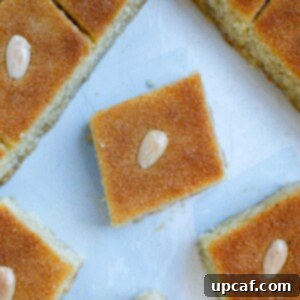
Print Recipe
Namoura (نمورة) Semolina Cake
2 hours 25 minutes
32 minutes
2 hours 57 minutes
30 servings
Ingredients
For the Cake:
- 3 cups coarse semolina flour, also known as farina
- 1 cup fine semolina flour, also known as ferkhra
- ¾ cup salted butter, melted, warm
- 1½ tbsp. baking powder
- ½ cup granulated sugar
- ⅔ cup plain yogurt, whole fat
- ⅔ cup evaporated milk, carnation, warm
- 3 tbsp. orange blossom water
- 2 tbsps. tahini paste, for greasing the tray
- ½ cup almonds, peeled, halves
SUGAR SYRUP:
- 4 cups sugar
- 2 cups water
- 2 tbsps. orange blossom water
- 1 tbsp. rose water
- 2 tsps. lemon juice
Other
- ¼ cup melted butter, for brushing after first bake
Instructions
- Prepare the Lebanese Simple Sugar Syrup (Ater) and set aside to cool completely.
- In a large mixing bowl, combine the fine semolina and coarse semolina with the warm melted butter. Mix well by hand or with a spatula until the semolina is thoroughly coated. Allow it to sit for 10 minutes to begin absorbing the butter.
- Add in the warm evaporated milk, orange blossom water, baking powder, yogurt, and granulated sugar to the semolina mixture. Mix gently until all ingredients are just combined and the batter is uniform. Be careful not to overmix.
- Line a 15 inch x 10 inch non-stick baking pan with parchment paper. Brush the parchment paper and sides of the pan with tahini paste. Pour the Namoura batter into the prepared pan and spread it out evenly with a flat metal spatula or your wet palm to create a smooth surface.
- Cover the pan loosely and let the batter rest at room temperature for at least 2 hours. This crucial step allows the semolina to fully hydrate and soften, which is vital for the cake’s tender texture.
- Using a small, sharp knife, gently score the surface of the Namoura batter into your desired square or diamond patterns. If the knife sticks, dip it in water for cleaner lines. These lines serve as a guide for almond placement and eventual cutting, so they don’t need to be perfectly deep.
- Press one peeled almond half into the middle of each scored portion on the batter.
- Preheat your oven to 375°F (190°C).
- First bake: Place the Namoura cake on the middle rack in the pre-heated oven and bake for 20 minutes. Remove the pan from the oven and quickly brush the entire surface of the cake with the ¼ cup of melted butter or ghee.
- Second bake: Return the cake to the oven and bake for another 10 minutes. Once the edges are golden brown, turn on the oven’s broiler to a low setting. Broil the top for just 1-2 minutes, watching very closely to achieve a darker golden color on top without burning.
- Immediately remove the Namoura from the oven and, while it’s still hot, evenly pour at least 3-4 cups of the cooled sugar syrup over the entire surface (preferably 4 cups for maximum moisture). Allow the cake to cool completely at room temperature for at least 2 hours before cutting into portions and serving. This allows the syrup to be fully absorbed, resulting in a perfectly moist and flavorful cake.
Notes
- Allow the completed Namoura batter to rest for at least 2 hours before cutting into desired shape and baking.
- Watch the cake very closely when broiling the top for 1-2 minutes to prevent burning.
- Pour all 3-4 cups of sugar syrup over the hot cake, otherwise, it will come out dry. Namoura should be very moist as the semolina will absorb all the syrup. Dry Namoura will result in a crumbly cake. At the very least, 3 cups for a semi-moist cake.
- Allow the cake to rest for at least 1-2 hours after adding syrup to absorb it well before cutting through it and serving.
- Milk and Butter must be warm, not cold, when added to the batter.
- Pan size: Note that if you change the pan size to something smaller, the cake will be thicker. If you use something larger, the cake will be thinner. This cake portion is designed for a 15 x 10 inch pan, as I prefer my Namoura to be of medium thickness, approximately 0.75 inches thick.
Nutrition
Enjoyed this recipe? Please rate and comment below!
